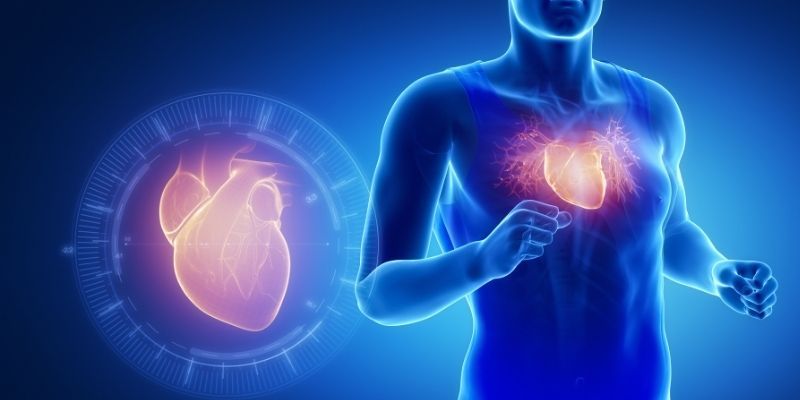
New research will monitor the heartbeats of more than 100 athletes over two years to measure how endurance exercise impacts their heart.
A project at the University, funded by the British Heart Foundation (BHF), will see 106 veteran male athletes fitted with a small implantable monitor. The devices are around half the size of a ballpoint pen and will be implanted under the skin on the athlete’s chests.
Heart scarring is a key feature of many heart diseases and has a strong association with abnormal heart rhythms, which can cause life-threatening cardiac arrest.
A previous small study involving male athletes aged over 50 found that about half of the participants had developed scarring on their heart. It is thought this could be caused by their levels of exercise, as during endurance sports like long-distance running and cycling the heart must work even harder to pump blood. But it remains unclear how scarring has developed.
The new monitor will measure every each of the participants’ heartbeats over two years, allowing researchers to assess the athletes’ heart rate during and after exercise. Previously, this measurement has been carried out using sensor stickers and fitness trackers, which have not always been accurate.
With the implantable monitors set to detect billions of heartbeats, we are going to learn so much through this study, including whether heart scarring is linked to irregular heart rhythms
The research is now underway at the Advanced Imaging Centre at Leeds Teaching Hospitals NHS Trust and is being led by Dr Peter Swoboda, a cardiologist from the School of Medicine.
He said: “Exercise is good for the heart, but studies have suggested that people who participate in long term endurance sport could lose the health benefits of exercise – and in some cases, may even be damaging their hearts over time.
“For an athlete, an abnormal heart rhythm can often result in the end of their career, and we are all familiar of the devastating but rare occurrence of sudden death during sport.
“With the implantable monitors set to detect billions of heartbeats, we are going to learn so much through this study, including whether heart scarring is linked to irregular heart rhythms. This could help identify who is most at risk, and some of the lessons we learn could be applied to younger athletes, too.”
Alleviating hereditary risk
The athletes will also undergo MRI scans, which will look for signs of scarring and assess heart function, alongside blood and fitness tests.
Overall, the £320,000 project will aim to understand if heart scarring in male athletes is linked to abnormal heart rhythms.
The research focuses on male athletes because previous studies suggest nine out of 10 cardiac arrests in sport happen in men. Studying those at highest risk first will help researchers understand the mechanisms of dangerous heart rhythms during sport.
Further research will be needed to determine whether the findings may be applicable to female athletes.
Family link
Cyclist Gethin Davies-Jones will be taking part in the study. The 55-year-old, who lives near Caerphilly in Wales, has lost family members to heart problems.
Gethin’s brother Glyn Jones was also 55 when he suddenly collapsed whilst competing at a local sporting event. It was discovered that Glyn had been living with coronary heart disease, which had been undiagnosed. Sadly Glyn later died in hospital. Gethin’s mother Helen Jones was in her late 40s when she died from a sudden cardiac arrest.
Gethin said: “Losing family members when they were of a young age had a huge impact on me. There are so many conversations and memories I now won’t be able to have with my brother and mum, and their experiences have put my own mortality sharply into focus.
“Cycling is a huge passion of mine – I enjoy competitive time trialling and I’m a beginner triathlete. The sport is great for my mental health and since taking it up I’ve been able to lose 12kg in weight. However, when I get out on my bike, there is always the worry in the back of my mind that what happened to my brother could happen to me.
“That’s why my interest in this study is so immediate and deep, as it will help me understand more about my own heart health. It’s great that the British Heart Foundation is funding this research, as it could really benefit athletes like me.”
Dr Subreena Simrick, Senior Research Advisor at the BHF, said: “Physical activity can reduce the risk of heart and circulatory diseases, helping to control your weight and reduce blood pressure and cholesterol levels.
“This research is looking at how endurance exercise impacts the heart, and whether heart scarring found in some athletes is a factor that leads to potentially dangerous irregular heartbeats. If it is, then this project could pave the way for further research into potential treatments and preventions, allowing athletes of all ages to participate in sport as safely as possible.”
Further information
This story was amended on 14 June 2022 to clarify that the study focused on male athletes.
Top image: Adobe Stock
For media enquiries, email University of Leeds Press Officer Lauren Ballinger at l.ballinger@leeds.ac.uk.